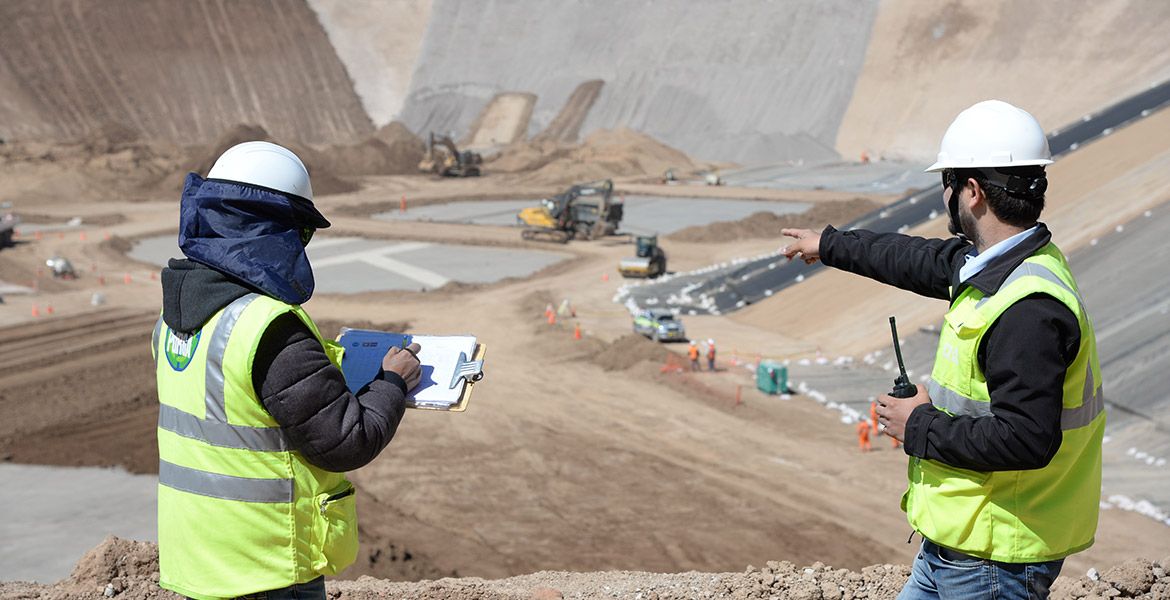
Abacus Mining & Exploration holds the rights to mine copper and gold from the former producing Afton-Ajax property in British Columbia. Keith Regan learns how a recent joint venture agreement will enable Abacus to bring the mine back into production without diluting shareholder value, with global implications well into the future.
When the bottom fell out of the metals market in the mid-1980s, mining companies found themselves forced to mothball formerly productive and profitable mines around the world. One such was the Afton-Ajax property in British Columbia, which had been actively mined for copper and gold since the 1970s. In 2003, seeking opportunities to find mines that were easily accessible and could be brought into production relatively easily, Abacus Mining & Exploration acquired the Ajax property from Teck-Cominco and later also acquired all the shops, offices and related support facilities.
“The value was obvious,” says Abacus chief executive officer Douglas Fulcher. “It was logistically ideal, a copper and gold producer, which was a direction we felt we wanted to be heading in as the markets began to recover.”
Abacus set out to conduct additional exploration on the 8,000-hectare (approximately 20,000-acre) property starting in 2006, and in summer 2009 it released a preliminary economic study that envisions a mine capable of producing 110 million pounds of copper and 100,000 ounces of gold in concentrate annually. Even with an estimated $500 million to $600 million needed to bring the mine into production, at current metal prices the project could have a payback time of as little as two years and, even using conservative pricing assumptions, displays robust economics.
With the scoping study in hand, Abacus began to explore options for moving the project forward and met with many potential joint venture partners, recalls Fulcher. One such company was one that the veteran explorationist had never heard of—Poland-based copper producer KGHM.
“I’m discovering that KGHM isn’t exactly a household name here,” Fulcher says. The low profile belies KGHM’s role as one of Europe’s top copper producers and the largest such company in Poland. On a world scale, KGHM is the ninth-largest copper producer and second-largest silver producer.
The company also has a mandate to grow from its current production of 500,000 metric tons (tonnes) a year to 700,000 tonnes by 2017 and has been actively searching for projects that can help contribute to that goal. “Abacus is KGHM’s first effort outside of Poland to help them move closer to that goal.”
KGHM moved quickly once talks began, touring the property soon after. “The ink had hardly dried on the Preliminary Economic Assessment [PEA],” says Fulcher. A month later a term sheet was presented, and a month after that a deal was hammered out after Abacus executives traveled to Poland.
Under the terms of the agreement, which Abacus shareholders were scheduled to vote on in late June, KGHM immediately invested $4.5 million in a private placement in Abacus. Once the definitive agreement is finalized, the joint venture will receive another $37 million in cash, funds that will be used to take the project to the bankable feasibility study phase. Once that study is complete, the Polish company has the option of investing another $35 million in the joint venture, of which it would then own 80 percent to Abacus’s 20 percent. The joint venture would then provide all the funding for the mine’s construction to start up, with KGHM using its $7 billion in annual sales, $1 billion in annual net profits and debt-free balance sheet to help make that possible.
“This deal removes all the risk to bring the mine to production,” Fulcher asserts, adding that the additional exploration work that will be done for the bankable study will likely reveal an even larger resource than currently contemplated in the PEA. Even if KGHM decides not to move forward, Abacus’s worst-case scenario would be that it holds a bankable feasibility study and would be in a position to buy out KGHM’s majority stake. The joint venture approach also enables funds for exploration work to be conducted without dilution of the Abacus share base. “It’s fairly unusual for a deal of this type to be struck based on a Preliminary Economic Assessment,” Fulcher notes, “but because the PEA is so advanced, it provides a level of detail that goes beyond the norm.”
The fact that a deal was struck speaks to not only the resource and its potential but also the team at Abacus. “KGHM made it clear they are looking for a long-term partner who can help them with exploration and assessment of projects around the world,” says Fulcher. “In order to achieve their target, they are going to have to put a number of new projects in the pipeline, and they feel our team has the expertise, experience and know-how to be valuable partners for them in the identification of targets. We know they’re a great partner for us moving forward as well. The reality is, the speed with which they moved on the opportunity was very impressive. I have never seen a group that could pull together such a complex deal in such a short time.”
“It’s a partnership that every mining junior dreams of,” comments Donna Yoshimatsu, Abacus’s director of investor relations. “And it’s fairly unusual for a junior and a major to partner in this way.” Then again, there’s nothing really junior about Abacus Mining. In addition to Fulcher, who has been working with junior miners since an early age, the Abacus team consists of some of mining’s heavy hitters, in particular NY-listed Amax Inc. The Chairman of the Board is Tom McKeever, a CPA from New York who became president and CEO of Amax Coal Co. and executive vice president of Amax Inc., and later executive chairman of global metals trader RBS Sempra Metals until 2006. The COO is Andrew Pooler, also hailing from Amax Inc. and a former senior executive with Pan American Silver with almost a couple of dozen producers under his belt worldwide. Pooler surrounds himself with a top team of mining professionals extracted from leading consulting firms in North and South America. “KGHM recognized that we have the expertise and knowledge base to identify attractive situations, particularly in the Americas,” Yoshimatsu says.
The initial study shows a 23-year mine life for Afton-Ajax, with Fulcher optimistic that it can be expanded to 30 years or beyond, meaning the partnership could be one that lasts and builds significant shareholder value for both companies over time. “Before we had a good project and a good team,” comments McKeever. “Now we have a leading global producer as a partner with a fully funded project and the financing to build a mine—and what’s more, a chance to do it again.” www.amemining.com













